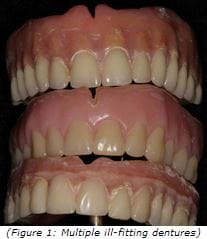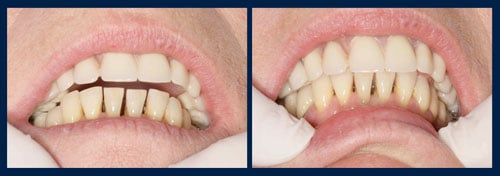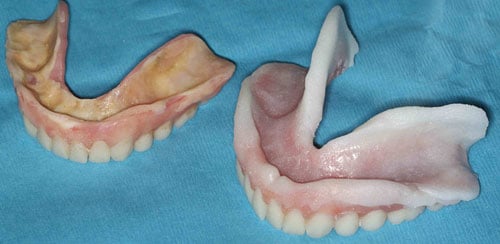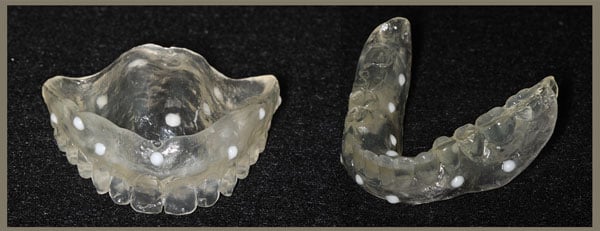
Rehabilitating the Completely Edentulous Patient
| Rehabilitating the completely edentulous patient is one of the most challenging tasks we face in restorative dentistry, and for me, the most rewarding. The majority of the patients I see with an existing set of complete dentures are suffering from pain under the denture bases, poor retention, difficulty with mastication and unnatural esthetics (Figure 1). I feel our society has come to accept the fact that this is what you get when you lose all of your teeth, that this is how dentures are supposed to feel because they are dentures! The psychological effects that accompany the loss of teeth often lead patients to insecurities, social isolation, and even depression. The physical effects of pain, weight loss, and poor nutrition can be even more debilitating. |  |
Combining what we have learned from Pete’s Concept of Complete DentistrySM, classic removable prosthodontic principles, and the latest technologies in implant dentistry, we have the ability to impact our patients lives in a way they never knew was possible.
| The key to successful denture-implant dentistry is knowing where the teeth need to be functionally, esthetically and phonetically. We begin chairside with setting the maxillary anterior teeth on a wax rim, to establish appropriate lip support, esthetics and phonetics, in the same way we work out our tooth-borne provisionals. A centric relation bite registration is critical to making sure there are no interferences which may dislodge the denture bases. I have found that almost all loose dentures have interference to CR (Figure 2). A lingualized occlusal scheme will provide stable centric contacts, helping to increase retention of the denture bases. Hydrocast material is used to get proper extension of the denture bases and to create a functional impression for maximum fit and comfort (Figure 3). |  (Figure 2: Upper denture with CR interference) (Figure 2: Upper denture with CR interference) (Figure 3: Denture without and with Hydrocast) (Figure 3: Denture without and with Hydrocast) |
Once the dentures are fabricated in this manner and the patient has been able to wear them successfully, appropriate implant therapy can be determined. In all honesty, some patients who come in wanting implants because of loose dentures have realized now they really don’t need them! But for the rest of the patients, implant therapy is necessary for adequate stabilization or perhaps they want to go to a fixed treatment option.
| For cone beam analysis, the dentures are duplicated using a radiopaque material to evaluate the bone to tooth relationship (Figure 4). At this point, treatment planning with the surgeon and the laboratory technician is critical. Sequencing and phasing the treatment, knowing how much chair time is needed, and laboratory fees all need to be determined ahead of time. A treatment plan which is in harmony with the patient’s expectations and desires can then be presented. |  (Figure 4: Duplicate dentures with radiopaque markers) |
 (Figure 5: Happy and satisfied patient)
(Figure 5: Happy and satisfied patient) | Sometimes the road is long for these patients, but the light at the end of the tunnel ultimately leads them to a better quality of life and that is what it is all about (Figure 5)! |








Leave a Reply
Want to join the discussion?Feel free to contribute!